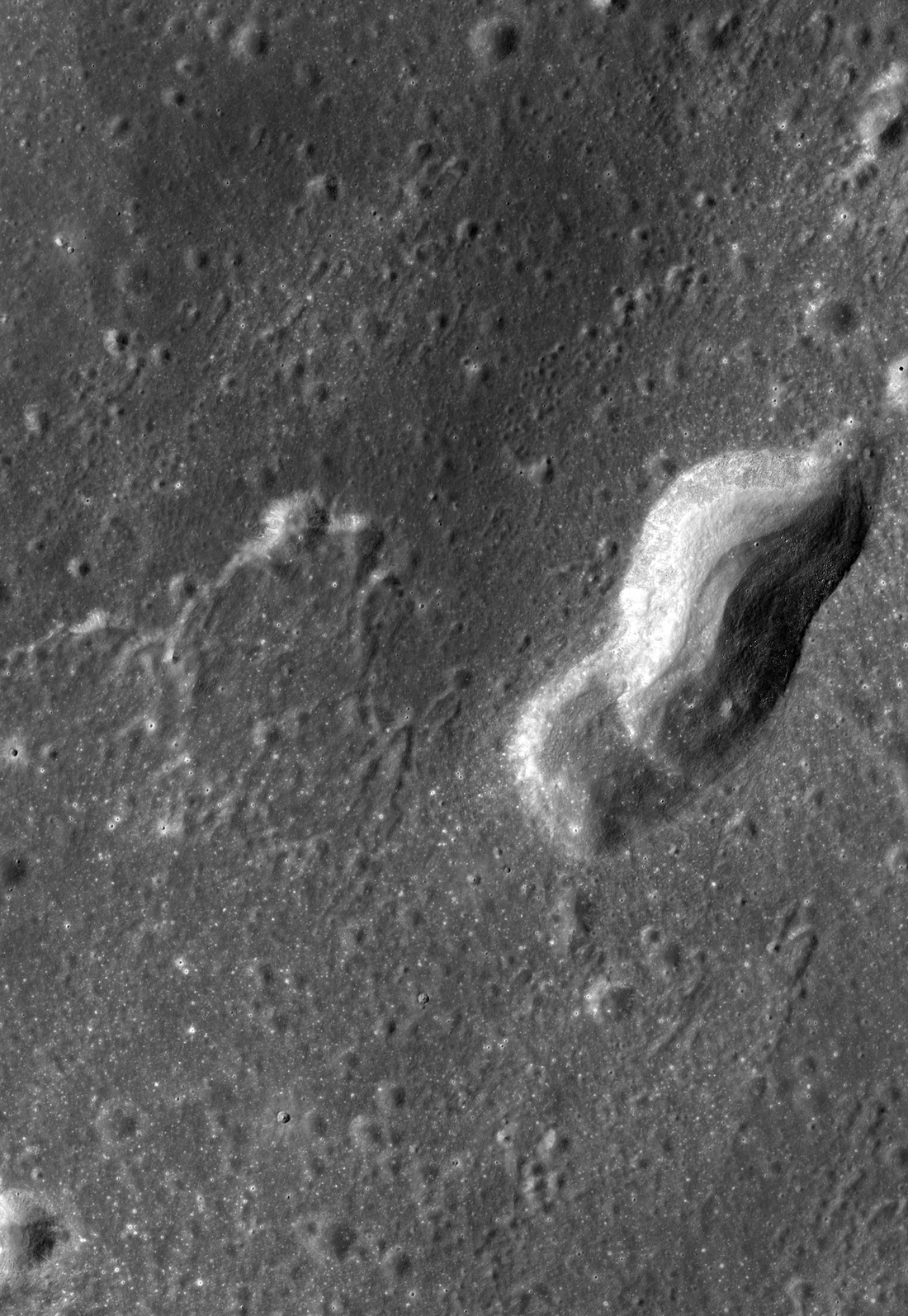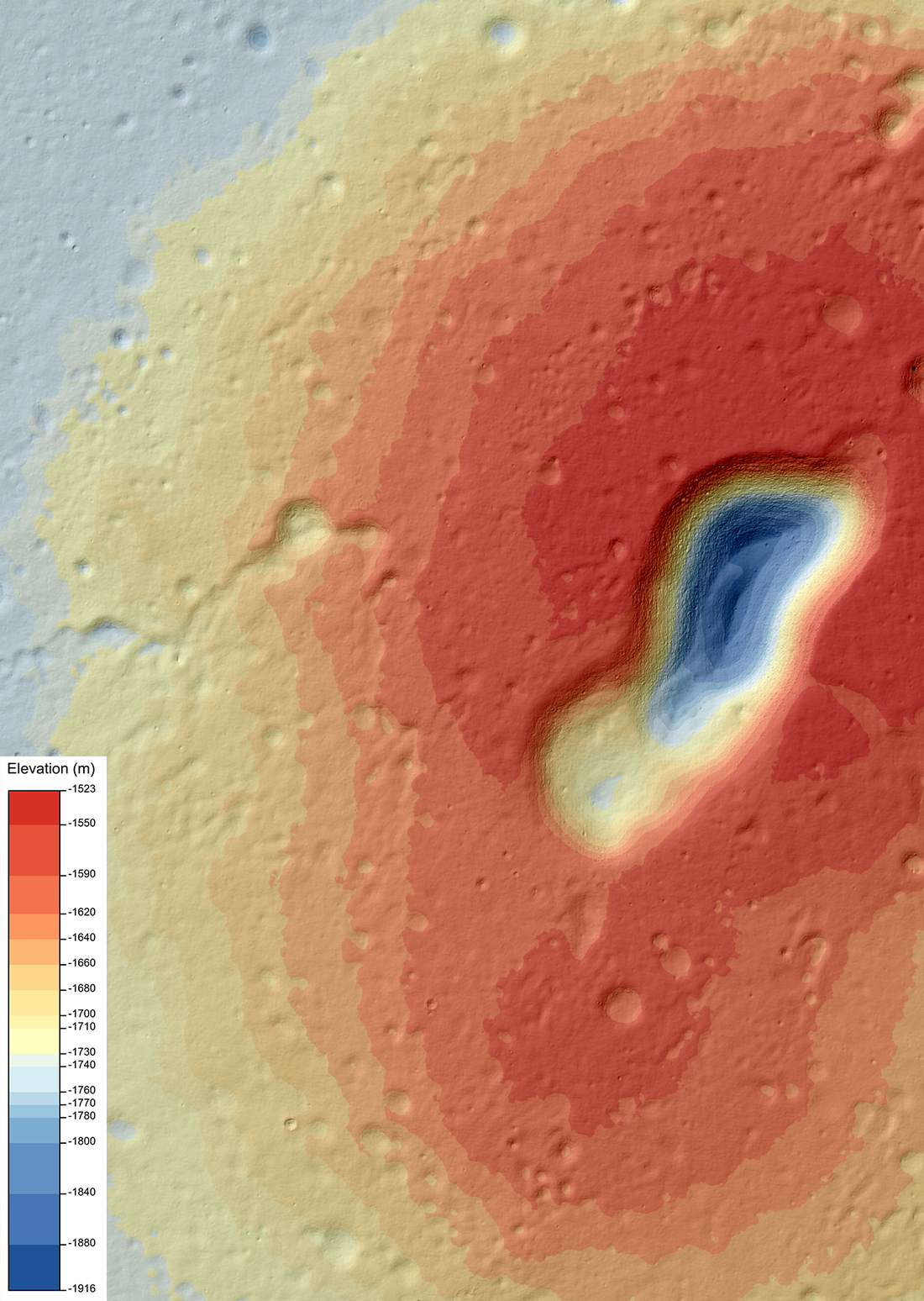
Although active volcanism on the Moon largely ceased over a billion years ago, remnants of ancient volcanic activity persist in many landforms we still see today. These include the lunar maria, as well as rilles, cones, and domes. The focus of this featured image post is the dome, Herodotus Omega, located in central Oceanus Procellarum ("Ocean of Storms") on the western lunar nearside (20.25°N, 309.93°E). Unlike most lunar domes, which are typically found in clusters, Herodotus Omega stands alone. While the full extent of this dome is difficult to discern in the above image due to its relatively gentle slope and low relief, its diameter measures about 12 kilometers, and it rises to a maximum height of about 220 meters above the surrounding mare surface (measured from the digital terrain model (DTM); see figure below). As is typical for lunar domes, Herodotus Omega is named by appending a Greek letter to the name of a nearby major crater, Herodotus crater, which is located about 70 kilometers north of the dome.

Scientists estimate that lunar domes formed over a roughly one-billion year period beginning around 3.7 billion years ago. Although the specific origin of Herodotus Omega remains unknown, it exhibits characteristics similar to other domes found throughout the lunar maria. Mare domes are much more common than non-mare domes, and can be divided into seven distinct classes. Although Herodotus Omega has not been officially classified, characteristics of its (likely) summit pit, cross-sectional shape, diameter, and slope suggest that it belongs to Class 1 or 2 (Head and Gifford, 1980). Like most mare domes, Herodotus Omega also exhibits relatively low albedo when compared to non-mare domes, such as those found in the Gruithuisen region.
This video, created by the LROC team using data from the DTM, showcases the relief of Herodotus Omega as a three-dimensional model, offering a clearer view of its topography.
The western mare features widespread evidence of past volcanic activity. The domes of these lunar seas have long been of interest to the scientific community. NASA once even considered the Hortensius Domes, a group of mare domes in nearby Mare Insularum ("Sea of Islands"), as a possible target for crewed exploration under the Constellation program. However, the program's unfortunate cancellation in 2010 halted those plans. While we hope that Herodotus Omega and the other domes of the western mare eventually welcome their first robotic or human explorer, they currently stand silently awaiting their arrival.
Explore the entire Herodotus Omega DTM with the Zoomify below!
Related Featured Images:
Farside Highlands Volcanism!
The Fourth Mairan Dome
Mons Rümker and the Moon's Volcanic Past
Volcanoes in Lacus Mortis
Published by Steven Nystrom on 16 July 2025